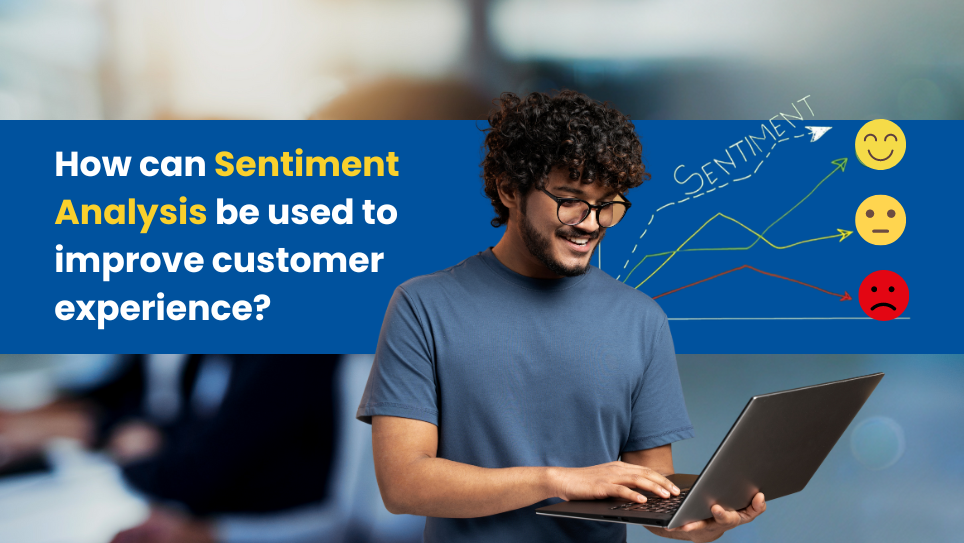
How can sentiment analysis be used to improve customer experience?
We are living in a hyper-connected world. With an exponential rise of social media platforms like Facebook, Instagram, and Twitter, brands aren’t just passive observers of customer feedback but active participants in real-time conversations. Customers have multiple communication channels at their fingertips, making it easier than ever to share experiences, voice their opinions, and praise or criticize brands openly.
According to a study by Microsoft, 96% of consumers say customer service is a key factor in brand loyalty, and 90% of consumers expect an immediate response when reaching out to brands on social media.
But how do you keep track of all your customer communication and identify which ones matter the most?
This is where sentiment analysis comes in—a powerful tool in the customer experience landscape. It allows brands to listen to customer emotions across all touchpoints and channels, helping them identify key trends, pain points, and opportunities for improvement.
Brands like Starbucks and Netflix have leveraged sentiment analysis to actively monitor customer feedback and have seen a significant increase in customer retention as a result.
Business catastrophes don’t happen overnight—there are warning signs. With sentiment analysis, brands can detect these early signs and take proactive measures before minor complaints snowball into a full-blown crisis.
Let’s dive deeper into how sentiment analysis works and how Antlere, with its comprehensive omnichannel suite, utilizes this tool to enhance customer experience.
So, what is Sentiment Analysis?
Sentiment analysis is a sentiment assessment tool that interprets attitudes, opinions, and emotions expressed in speech or text. It is a natural language processing (NLP) technique that uses algorithms to evaluate the language and context to figure out whether an expressed emotion is positive, negative, or neutral.
In sentiment analysis, you gather and evaluate customer feedback from various channels – reviews, surveys, phone calls, support tickets, and more. This information provides an insight into:
- Primary issues customers are complaining about
- Sentiment/emotion behind each query (positive, negative, or neutral)
- Key drivers of positive and negative sentiments
- Fluctuations in common sentiments
A retail brand might use sentiment analysis to understand why customers are frustrated with their delivery service or why certain products receive glowing reviews.
Brands like Zappos use sentiment analysis to identify and address customer frustrations, such as delays in delivery, by tracking feedback across multiple channels. They then use this insight to improve shipping processes, offering faster delivery options and reducing dissatisfaction – using the power of sentiment analysis to optimize customer experience.
Now, let’s look at how can sentiment analysis be used to improve customer experience.

Benefits of Sentiment Analysis
Identify Pain Points in Customer Journey
When customers reach out for assistance, it often highlights the roadblocks in their experience. If not rectified, these friction points can escalate and lead to customer churn and revenue loss.
Amazon uses sentiment analysis to monitor customer feedback on product delivery. When delays are flagged as a recurrent issue, Amazon responds by optimizing logistics, leading to better customer satisfaction and fewer delivery complaints.
Its essential that you, as a customer-centric business, identify and understand these pain points. Sentiment analysis accumulates feedback from different channels into a single platform. The tool auto-analyzes and categorizes the feedback, providing information on:
- Issue
- Sentiment
- Priority
An example could be:
- Issue: Long Hold Times on Support Call
- Emotion: 88% Frustrated
- Priority: Critical
This feedback suggests your support team knows exactly what issues they must prioritize, providing enhanced customer experience.
Anticipate High-Risk Customers and Minimize Churn
When customers reach out for support, it often highlights friction points in their experience. If not addressed promptly, these issues can escalate, leading to customer churn and revenue loss.
In fact, 96% of customers will leave a brand after experiencing poor customer service (Microsoft).
Customers with a negative emotion are more at risk of churning and switching to another brand. Prevention lies in quick responding. Use this insight to offer solutions, compensations, or an empathetic remark. This reflects acknowledgment and understanding of their issues.
Having a proactive approach improves customer retention and elevates overall customer experience, reinforcing satisfaction and loyalty.
Brands that respond quickly to customer feedback can see a 25-40% increase in customer retention (Bain & Company).
Resolve Issues Faster and Reduce Backlog
Customer sentiment analysis can help you tackle your case backlog. By understanding the nature and nuance of each support ticket, sentiment scores speed track the case assignment process and minimize resolution time.
Customers expect quick and proactive support experience.

Customer satisfaction peaks at 84.7% when the first response time is between 5 to 10 seconds, showcasing the critical role of prompt responses in customer service.
Advanced sentiment analysis tools like Antlere Smart can help you cut down your resolution time substantially. Also, it provides excellent time-to-value for your customers. In fact, you get to see your backlog management improve in a short span of time.
Customer sentiment analysis is a powerful tool for tackling the dreaded case backlog. By accurately capturing the topic and nuances of each support ticket, sentiment scores streamline the case assignment process, leading to quicker resolutions.
These scores enable managers to route tickets to the most suitable agents, ensuring issues are resolved faster and backlogs are significantly reduced.
What Are Some Practical Applications of Sentiment Analysis in Customer Service
- Social Media Engagement: By monitoring customer sentiments on social media, companies can engage more effectively with their audience, addressing concerns and celebrating positive feedback in real-time.
Brands like Nike actively monitor social media sentiment to engage with customers in real-time. By addressing concerns or celebrating positive feedback, Nike strengthens customer relationships and builds brand loyalty.
- Comprehensive Feedback Analysis: Sentiment analysis allows businesses to process and understand feedback from multiple channels, providing a holistic view of customer sentiment and areas for improvement.

- Optimized Customer Journeys: Integrating sentiment analysis into customer journey mapping helps in pinpointing pain points and optimizing interactions at every stage of the customer lifecycle.
- Crisis Management: During critical times—such as a product recall or a service outage—sentiment analysis can help companies like Facebook quickly assess public sentiment and craft effective responses to mitigate damage.
By using customer sentiment analysis, brands can move beyond conventional customer service methods. With sentimental analysis tools like Antlere Smart, companies can integrate this technology into their customer care strategies to ensure that every interaction is dealt with empathy, accuracy, and speed. This approach not only boosts customer satisfaction but also solidifies long-term brand loyalty.
Drive Customer Experience Improvements Through Sentiment Tracking with Antlere Smart
In the present digital market, your customer’s loyalty can shift in an instant. Real-time sentiment analysis is more than a luxury – it’s a critical component of understanding your customers, fostering brand loyalty, and staying ahead of the competition.
Discover how Antlere Smart survey software can revolutionize your approach to customer experience.
Experience firsthand how real-time sentiment tracking with Antlere Smart can drive innovation, enhance customer satisfaction, and drive your business growth.


